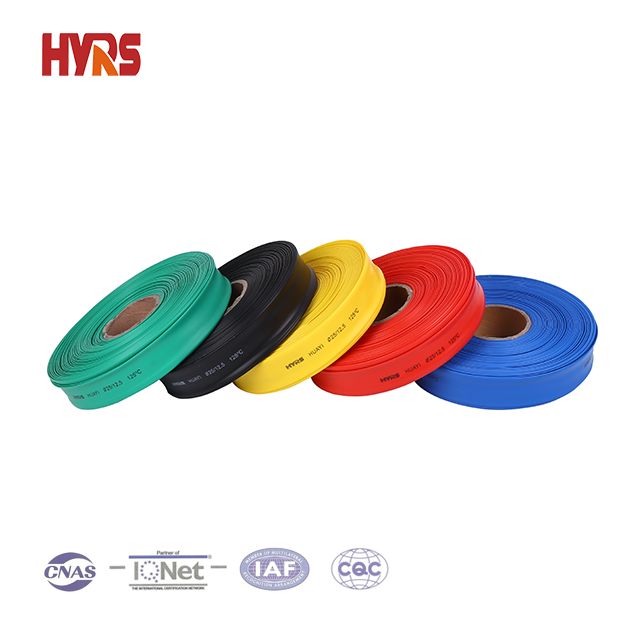Ensuring Excellence: Industry Standards for Electrical Insulation in Low Voltage Heat Shrinkable Tubes
2024-01-22
Introduction:
In the dynamic landscape of electrical systems and cable management, adherence to industry standards is paramount. Low voltage heat shrinkable tubes, integral components in electrical insulation, are subject to rigorous standards to ensure their reliability and safety. In this blog post, we will explore the industry standards that govern low voltage heat shrinkable tubes, emphasizing their role in maintaining excellence in electrical insulation.
1. Industry Standards for Electrical Insulation:
- Global Relevance: Electrical insulation standards are established by international and national organizations to ensure uniformity, reliability, and safety across diverse applications and industries.
- IEC and ASTM: The International Electrotechnical Commission (IEC) and the American Society for Testing and Materials (ASTM) are two prominent organizations that contribute to the development of standards for electrical insulation materials.
2. IEC 60684 Standard:
- Scope: IEC 60684 is a widely recognized international standard that specifically addresses flexible insulating sleeving used in electrical insulation.
- Categorization: The standard categorizes insulating sleeves based on their materials, properties, and applications. This includes heat shrinkable tubing used for low voltage applications.
3. ASTM Standards:
- ASTM D2671 and ASTM D2671/D2671M: ASTM D2671 is a standard test method for determining the shrink ratio and recovery force of heat shrinkable tubing. ASTM D2671/D2671M encompasses both metric and inch-sized tubing, providing comprehensive guidelines for testing.
- ASTM D876 Standard: ASTM D876 is a standard test method for measuring the shrinkage of heat-shrinkable plastics.
- ASTM D5870 Standard: ASTM D5870 is a standard practice for determining the size of particles passed by a screen using a suspension of glass beads.
4. Compliance with UL Standards:
- UL 224 Standard: Underwriters Laboratories (UL) is a renowned organization that sets safety standards for electrical insulation materials. UL 224 specifically addresses heat shrinkable tubing, defining requirements for various aspects, including temperature ratings, flame resistance, and shrink ratios.
5. Requirements for Flame Retardancy:
- UL 224 Flame Test: One critical aspect of industry standards is the evaluation of flame retardancy. Heat shrinkable tubes are often subjected to flame tests to assess their ability to resist combustion and prevent the spread of fire.
6. ISO Standards:
- ISO 9001 and ISO 14001: While ISO standards primarily focus on quality management and environmental management, adherence to these standards by manufacturers reflects a commitment to consistent product quality and environmentally responsible practices.
7. Material Specifications:
- Material Composition: Industry standards often specify the acceptable materials for heat shrinkable tubes. For example, tubes made from polyolefin or fluoropolymer materials must meet certain criteria to ensure their suitability for electrical insulation.
8. Application-Specific Standards:
- Industry-Specific Standards: Certain industries or applications may have specific standards for electrical insulation. For instance, the automotive industry may have additional requirements for heat shrinkable tubes used in vehicle wiring.
Benefits of Compliance with Industry Standards:
1. Reliability and Consistency:
- Compliance with industry standards ensures that low voltage heat shrinkable tubes consistently meet specified requirements, contributing to their reliability in diverse applications.
2. Safety Assurance:
- Standards for electrical insulation emphasize safety considerations, including flame retardancy and resistance to electrical hazards. Compliance with these standards ensures that the tubes provide a high level of safety in electrical systems.
3. Interchangeability:
- Adherence to international standards enhances the interchangeability of heat shrinkable tubes across different manufacturers and applications, promoting a seamless integration into diverse electrical systems.
4. Quality Control:
- Industry standards often include guidelines for quality control and testing procedures. Manufacturers following these standards implement robust quality assurance measures, leading to consistent product quality.
5. Global Acceptance:
- Products conforming to recognized industry standards are more likely to be accepted globally. This is especially important for manufacturers catering to international markets where adherence to established standards is a key requirement.
Conclusion:
Low voltage heat shrinkable tubes, as guardians of electrical insulation, adhere to stringent industry standards to ensure their reliability, safety, and effectiveness. Whether governed by international organizations like IEC and ASTM, UL standards, or industry-specific requirements, compliance plays a pivotal role in maintaining excellence in electrical insulation. As essential components in the intricate tapestry of electrical systems, heat shrinkable tubes exemplify the commitment to industry standards, contributing to the seamless integration and safety of diverse applications.



